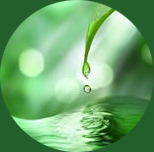So I have been watching a lot of webinars on improving gut function. I watched one on ‘Hacking GLP-1 through the Gut Microbiome’. GLP-1 is a hormone that plays an important role in regulating blood glucose levels and appetite. It is involved in blood glucose control and weight management. The popular weight loss drugs target GLP-1. How can we promote production of this hormone in our body through diet or probiotics vs a drug that has a lot of side effects?
You likely know that eating fiber is key. Eating fiber in the form of fruits, vegetables, raw nuts, beans and legumes as well as whole grains preferably gluten free if you have an autoimmune disease is a good start. Eating 50 grams of fiber may seem like an improbable goal but shoot for the stars. Make sure if you are increasing your fiber intake that you start slowly.
The webinar talked about the importance of the bacterial strain Akkermansia muciniphila in stimulating goblet cells in the microbiome to produce mucin which contributes to the integrity of the intestinal barrier. It produces short chain fatty acids like butrytate which lowers inflammation. When fiber loving Akkermansia colonizes your gut in the right numbers It keeps the fence tight so the bad bacteria are kept out of the gut wall like gram negative bacteria that produce LPS or lipopolysaccharide which is known to create inflammation.
Some foods that support the growth of beneficial species like Akkermansia include polyphenols such as cloves, oregano, sage, blueberries, plums, cherries, pomegranates, black olives, green olives, artichokes, red onions, spinach, flaxseeds, pecans, walnuts, dark chocolate, coffee, black tea, green tea and red wine. Be sure to include these foods in your diet. Polyphenols tell your enterocytes to produce GLP-1. GLP-1 increases insulin secretion and increases insulin sensitivity. GLP-1 increases satiety and decreases systemic inflammation.
Prebiotic food sources to include that support growth of beneficial bacteria include dandelion greens, asparagus, leeks, apples, konjac root, jicama root, seaweed, artichoke, onions, garlic, cocoa, kiwi, oats and chicory root. All these foods activate bacteria in the gut to produce short chain fatty acids which create beneficial metabolites to regulate physiology. Cutting out gut busters like high fat foods, sugar, high amounts of alcohol and other processed foods is very supportive of optimum gut function.
For more information please go to Pendulumlife.com. I am looking at how I can get these products into our clinic right now or make them available to patients. Some of these products in testing have been shown to reduce food cravings and improve metabolic function and thus control weight. To learn more about supporting your microbiome, book an appointment with me at Parallel Wellness.
In good gut health, Dr. Robin Vinge, ND 4032321283
References ‘Hacking GLP-1 Through The Gut Microbiome Adam Perlman, MD, MPH, CMO Rupa Health Webinar 2024

